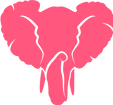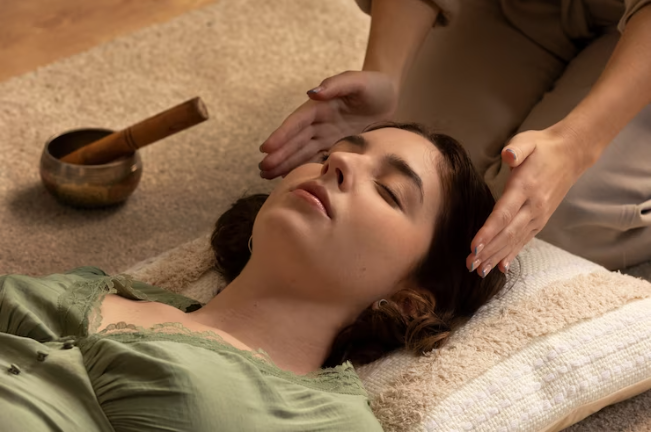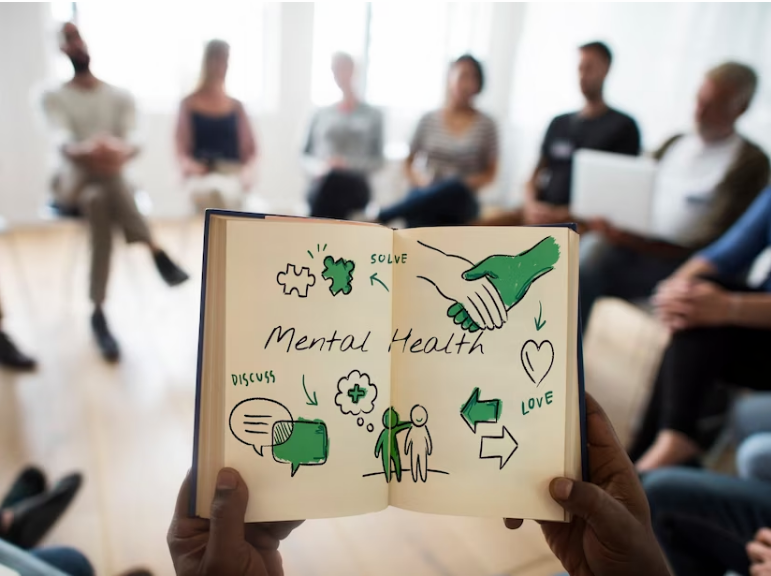Reiki Healing: You are a vessel of energy, constantly flowing and vibrating with life force.
Sometimes, however, that energy can become blocked or imbalanced, leading to physical or emotional ailments.
Reiki healing is a practice that seeks to restore this balance, tapping into the universal energy that surrounds us all.
Like a gentle stream, Reiki flows through your body, clearing away stagnant energy and promoting healing from the inside out.
This ancient form of energy medicine has been used for centuries to help individuals achieve a state of deep relaxation and inner peace.
In this article, we will take a deep dive into the world of Reiki, exploring its history and origins, how it works to promote healing, and what you can expect during a Reiki session.
So take a deep breath, open your mind, and let’s begin this journey into the world of Reiki healing.

Understanding Energy Medicine
We’re exploring how our bodies are made up of energy that interacts with the world around us. This energy flow is what makes us alive and keeps our bodily functions running smoothly.
Energy medicine is the practice of using this energy flow to heal and balance the body. This practice has been used for thousands of years and is based on the belief that the body has a natural ability to heal itself.
In energy medicine, the focus is on the energy centers in the body known as chakras and meridians. Chakras are energy centers located along the spine, and each one corresponds to different bodily functions and emotions.
Meridians are energy channels that run throughout the body, and they are used in traditional Chinese medicine to balance the body’s energy flow. Energy medicine practitioners use various techniques such as Reiki and acupuncture to balance the energy flow in these centers and channels, thereby promoting healing and well-being.
The History and Origins of Reiki
Let’s take a trip back in time to discover the roots and beginnings of this ancient practice.
Reiki healing is a traditional Japanese form of energy healing that dates back to the early 20th century. Its origins can be traced back to the teachings of Mikao Usui, a Japanese Buddhist monk who developed the practice in the mid-1920s.
According to legend, Usui was inspired to create Reiki after undertaking a 21-day spiritual retreat on Mount Kurama. During this retreat, he experienced a powerful spiritual awakening that led him to discover the healing power of energy.
The practice of Reiki has undergone a significant evolution and adaptation since its inception. Today, there are many different forms and variations of Reiki, each with its unique approach and philosophy. However, the core principles of Reiki remain the same.
They focus on the healing power of energy that flows through all living things and can be harnessed and directed to promote physical, emotional, and spiritual healing. Despite its relatively recent origins, Reiki has become a widely accepted form of alternative medicine. There are millions of practitioners and supporters worldwide.
How Reiki Works to Promote Healing
Understanding how this ancient practice operates can help individuals gain a better grasp of how subtle shifts in their energy can have a profound effect on their overall well-being.
The science behind Reiki is based on the concept that the human body is made up of energy fields that can become blocked or stagnant, causing physical, emotional, or spiritual distress.
Reiki healers, through the use of their hands, channel healing energy to the patient, helping to clear these blockages and restore balance to the body.
One of the ways Reiki works to promote healing is through chakra balancing.
Chakras are energy centers located throughout the body, and each one is associated with a particular area of the body and emotion.
When a chakra is blocked or imbalanced, it can lead to physical or emotional symptoms.
Reiki healers use their hands to channel energy to the chakras, helping to clear blockages and restore balance.
This can help patients feel more centered, grounded, and in tune with their bodies.
Reiki can also promote relaxation, reduce stress and anxiety, and improve overall well-being.
The Benefits of Reiki for Mind and Body
Exploring the advantages of Reiki can reveal how this ancient practice can positively impact both your mental and physical health.
One of the most notable benefits is the mental clarity it provides. Reiki promotes relaxation, reduces stress and anxiety, and helps you focus on the present moment. By doing so, it can clear your mind of any negative thoughts or emotions that may be clouding your judgement. Reiki can leave you feeling more centered, calm, and focused, which can greatly improve your overall well-being.
Reiki healing also has physical benefits, including promoting physical relaxation. The gentle touch of a Reiki practitioner can help release tension and tightness in your muscles, promoting relaxation and reducing pain. It can also help improve circulation and stimulate your body’s natural healing processes.
As a result, Reiki can help alleviate physical symptoms of stress, such as tension headaches and digestive issues. By promoting both mental and physical relaxation, Reiki healing can help you achieve a state of balance and harmony that can greatly improve your quality of life.
What to Expect During a Reiki Session
Get ready to experience a relaxing and rejuvenating session as you discover what typically happens during a Reiki healing session.
Before the session begins, your practitioner will discuss your intentions for the session and any particular areas of concern. You’ll then be asked to lie down on a massage table, fully clothed, while your practitioner begins the session.
During the session, your practitioner will place their hands on or near various areas of your body, allowing the flow of energy to be balanced. You may feel a warm or tingling sensation, or you may simply feel deeply relaxed.
It’s important to note that Reiki healing is a non-invasive practice and your practitioner will not manipulate your body in any way.
After the Reiki healing session is complete, your practitioner will discuss any insights or sensations you may have experienced and provide you with self-care tips to help you continue to benefit from the session.
By following these preparation steps and post-session self-care, you can make the most of your Reiki healing experience and continue to feel its benefits long after your session has ended.
You’re probably wondering how affirmations can actually change your brain and improve your life, Here
Conclusion
So, you’ve learned all about the fascinating world of energy medicine and the specific practice of Reiki healing. It’s truly amazing to think about the power of energy and how it can be harnessed to promote healing in both the mind and body.
If you’re feeling curious or drawn to Reiki healing, don’t hesitate to give it a try. Who knows, it could be the key to unlocking a whole new level of wellness and inner peace for you.
And let’s not forget, the benefits of Reiki healing extend well beyond just physical healing. It can also provide a sense of spiritual connection and emotional grounding that is truly unparalleled.
So, if you’re looking for a holistic approach to health and wellness, Reiki may just be the perfect fit for you. Give it a try and experience the transformative power of energy healing for yourself. It’s worth a shot – who knows, it might just change your life in ways you never thought possible!



